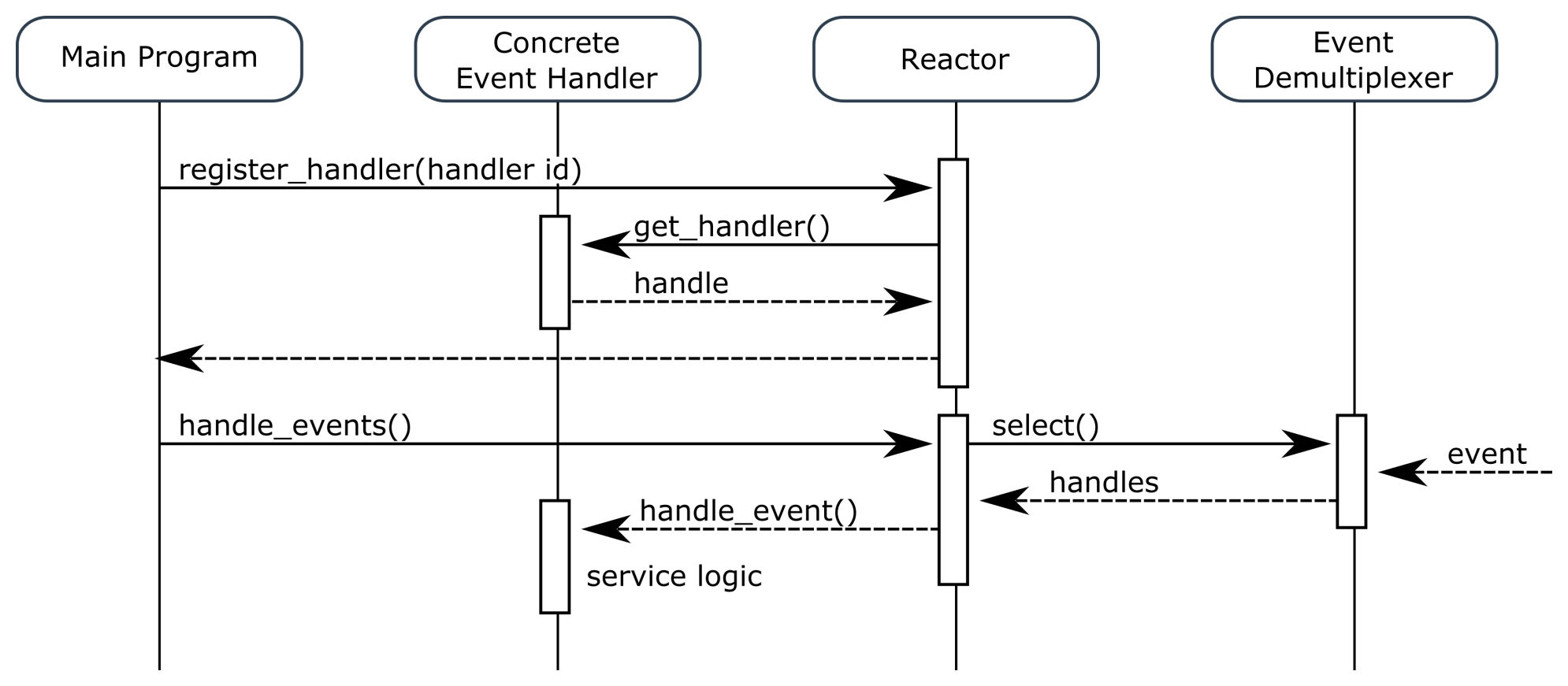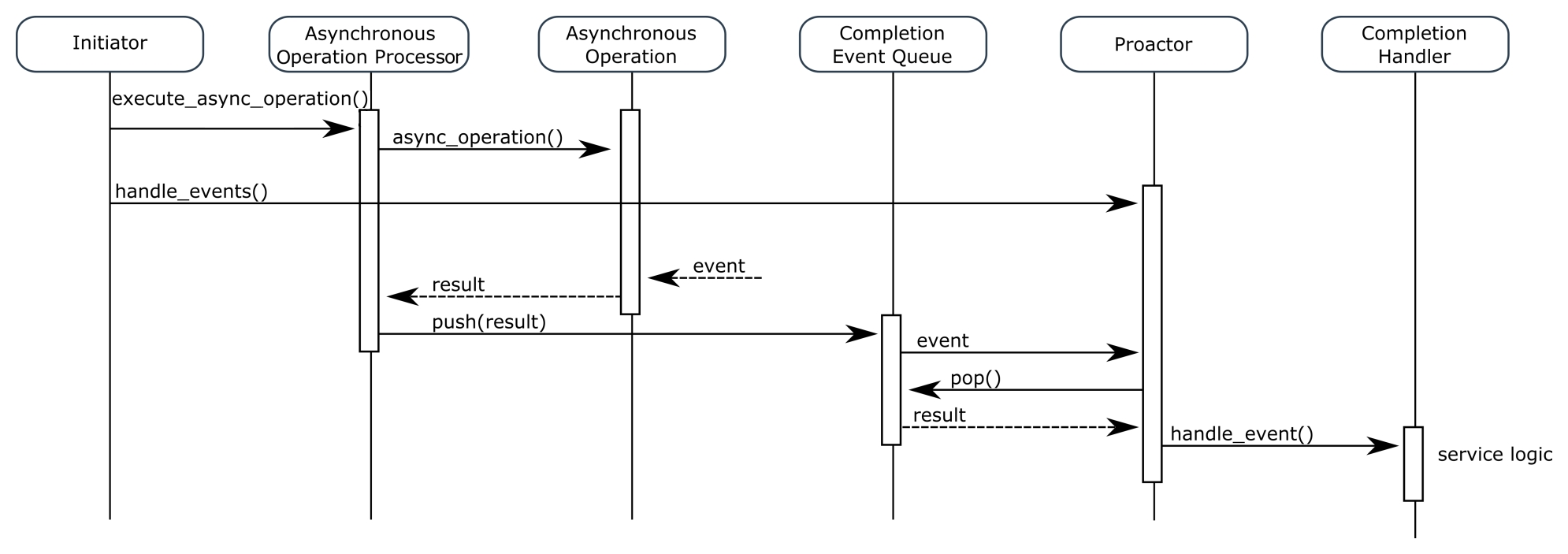When looking for information on event-driven programming concepts, two other similar terms are often mentioned: the reactor and the proactor. These are notions that are not really important when using high-level libraries such as ReactiveX and AsyncIO. Still, it is interesting to know what they are so that you can better understand what is going on under the hood. They are two kinds of low-level APIs that allow us to implement an event-driven library. For example, AsyncIO, which is the Python asynchronous API which can use a reactor or a proactor to expose the same APIs. Using a reactor or a proactor as the foundation of a framework is driven by the support, or not, of the proactor on the operating system. All operating systems support a reactor via the POSIX select system call or one of its derivatives. Some operating systems such as Windows implement proactor system calls. The difference between these two design patterns is the way I/O are managed.
Figure 1.2 shows a sequence diagram of how a reactor works. The three main components involved in this pattern are as follows:
- Reactor
- Event handler
- Event demultiplexer
When the Main Program needs to execute an asynchronous operation, it starts by telling it to the Reactor, with the identification of the Concrete Event Handler that will be notified when an event occurs. This is the call to the register_handler. Then the Reactor creates a new instance of this Concrete Event Handler and adds it to its handler list. After that, the Main Program calls handle_events, which is a function that blocks until an event is received. The Reactor then calls the Event Demultiplexer to wait until an event happens. The Event Demultiplexer is usually implemented through the select system call or one of its alternatives, such as poll, epoll, or kqueue. select is called with the list of handles to monitor. These handles are associated with the handlers that were registered before. When an event that corresponds to one of the handles occurs, the Event Demultiplexer returns the list of handles that correspond to the event that happened. The Reactor then calls the associated event handlers, and the event handlers implement the actual service logic. The following diagram demonstrates this:

Figure 1.3 shows a sequence diagram of how a Proactor works. On a Proactor system, asynchronous operations can be executed by an Asynchronous Operation processor. This is an entity which is provided by the operating system, and not all operating systems have support for it. There are more components involved in a Proactor than in a reactor. First, an Initiator asks the Asynchronous Operation processor to execute and operate. With this request, the Initiator provides the information about the operation to execute, as well as the instance of the Completion Handler and Completion Event Queue associated to the operation. Then the Asynchronous Operation processor creates an operation object that corresponds to the request of the Initiator. After that, the Initiator asks the Proactor to execute all pending operations. When an event associated with one of the operations happens, the operation notifies the Asynchronous Operation processor about it. The Asynchronous Operation processor then pushes this result to a Completion Event Queue. At that point, the Completion Event Queue notifies the Proactor that something happens. The Proactor then pops the next event from the Completion Event Queue and notifies the Completion Handler about this result. The Completion Handler finally implements the actual service logic.
On a Proactor, the Initiator and the Completion Handler may be implemented in the same component. Moreover, this chain of actions can be repeated indefinitely. The implementation of the Completion Handler can be an Initiator that starts the execution of another Asynchronous Operation. This is used to chain the execution of asynchronous operations:

As you can see, both patterns are somehow similar. They are both used to execute asynchronous operations. The main difference is in the way operations can be chained. On a reactor, asynchronous operations can be chained only by the main program once the blocking call to the event demultiplexer has been completed. On the other hand, a proactor allows the completion handlers to be initiators and so execute themselves new asynchronous operations.
Being aware of this is important because it allows us to understand what is going on behind the scenes. However, this is completely invisible with all the recent asynchronous frameworks. They all expose APIs whose behavior is similar to the proactor pattern because they allow us to easily chain asynchronous operations while others are still pending. However, they will still use a proactor depending on the operating system that you use. On some frameworks, when both the reactor and proactors are available, it is possible to select what pattern to use via configuration APIs.
